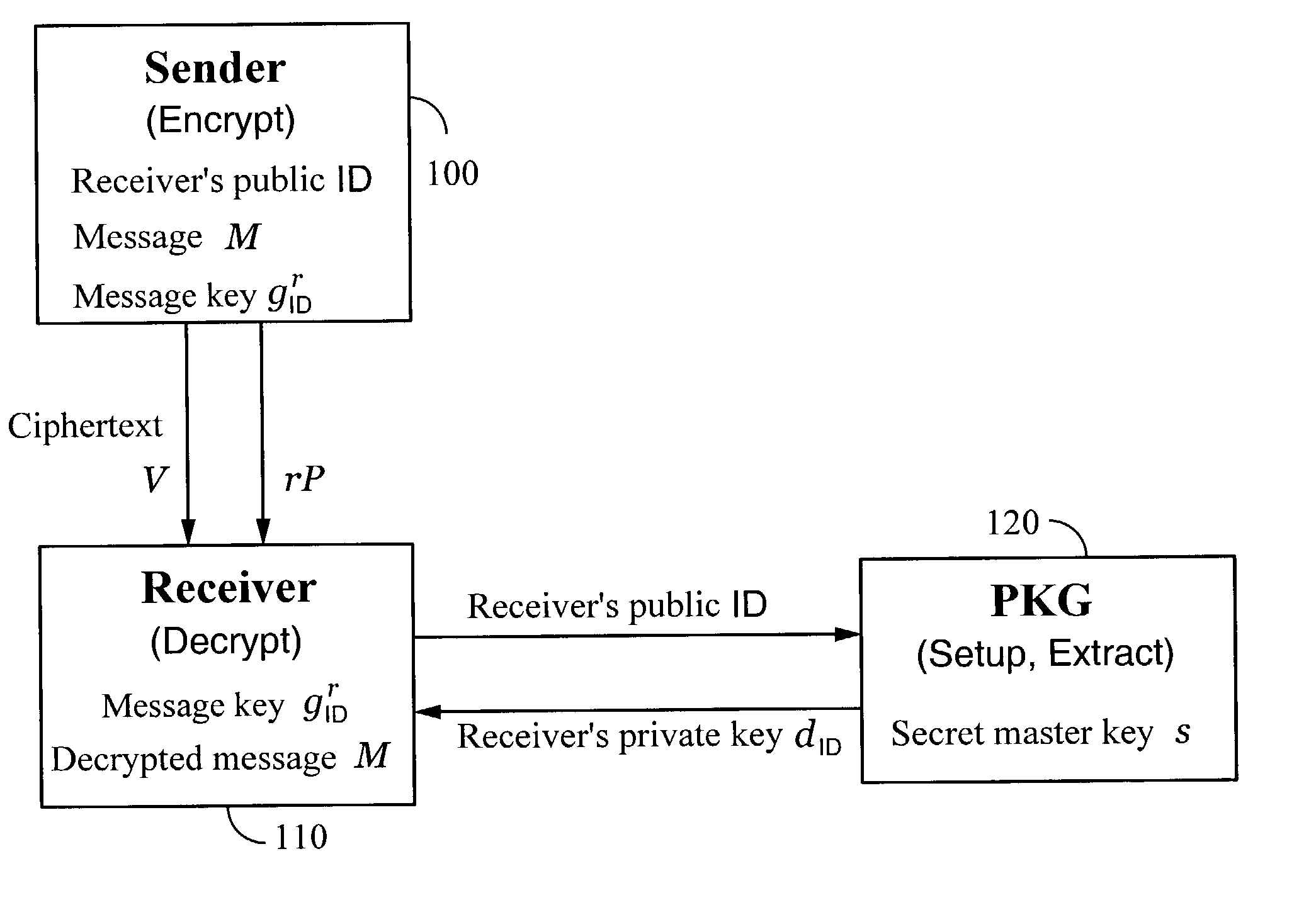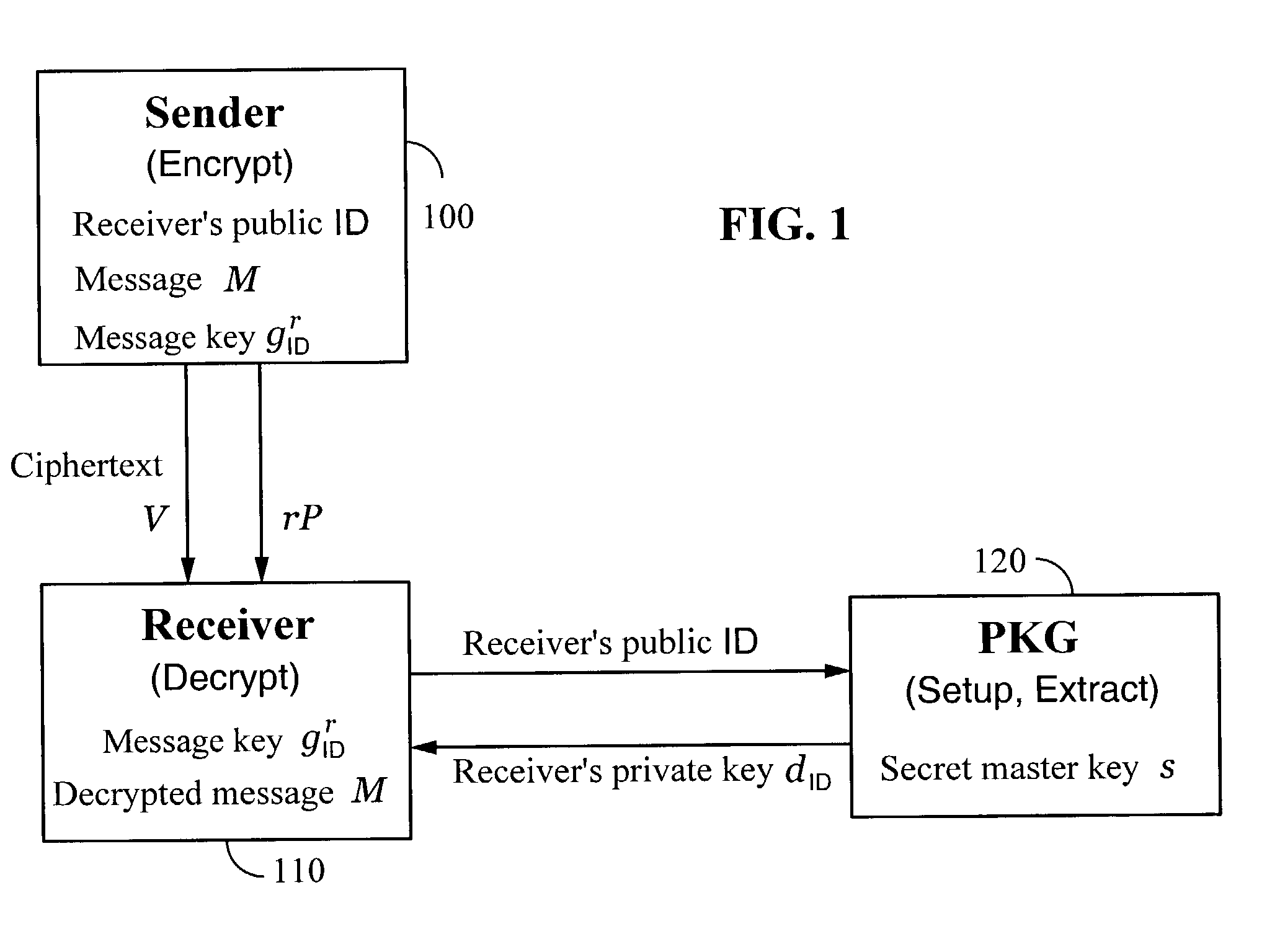Systems and methods for identity-based encryption and related cryptographic techniques
a cryptographic technology and identity-based encryption technology, applied in the field of identity-based encryption and related cryptographic techniques, can solve the problems of adding complexity to the cryptosystem, not providing a concrete, practical ibe cryptosystem, and other people's inability to encrypt messages to a person
- Summary
- Abstract
- Description
- Claims
- Application Information
AI Technical Summary
Benefits of technology
Problems solved by technology
Method used
Image
Examples
Embodiment Construction
[0038]The following description provides details of several exemplary embodiments of the cryptographic techniques of the present invention, as well as a technical discussion of the security of the system.
Overview
[0039]As is normally the case with modern cryptosystems, the techniques of the present invention are generally implemented on computers connected by a communication medium. Although typically the computers are connected by the Internet or another computer network, any communication medium may be used.
[0040]One embodiment of the invention comprises an identity-based encryption system that uses a secret message key derived from identity-based information. The message key may be used by a sender to encrypt a message, and by a receiver to decrypt the message. The secret message key is computed by the sender from an identity-based public key of the receiver. The same message key may be computed by the receiver from the receiver's private key, which is derived from the receiver's ...
PUM
 Login to View More
Login to View More Abstract
Description
Claims
Application Information
 Login to View More
Login to View More - R&D
- Intellectual Property
- Life Sciences
- Materials
- Tech Scout
- Unparalleled Data Quality
- Higher Quality Content
- 60% Fewer Hallucinations
Browse by: Latest US Patents, China's latest patents, Technical Efficacy Thesaurus, Application Domain, Technology Topic, Popular Technical Reports.
© 2025 PatSnap. All rights reserved.Legal|Privacy policy|Modern Slavery Act Transparency Statement|Sitemap|About US| Contact US: help@patsnap.com



